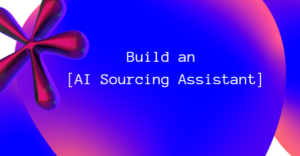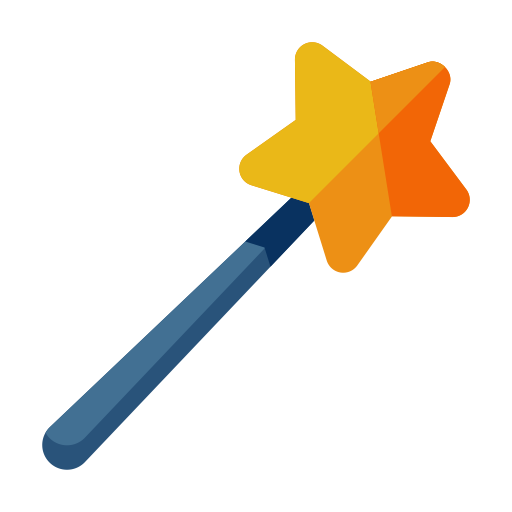
In today’s competitive market, recruiters are constantly juggling multiple tasks—from sourcing top talent to managing interviews and onboarding processes. Leveraging AI to streamline these operations is no longer a luxury; it’s a necessity. An AI assistant tailored for recruitment can transform how you source and connect with candidates, saving time and enhancing efficiency.
How to Create an AI Assistant for Recruitment with ChatGPT 4
Here’s a step-by-step guide to creating your very own AI assistant using ChatGPT, designed specifically to support recruitment efforts:
Step 1: Select the Right Platform and Upgrade if Necessary
To build a powerful AI assistant, start by choosing ChatGPT—preferably the latest version, such as GPT-4. A paid plan is recommended as it provides premium features like enhanced customization, higher usage limits, and more robust processing capabilities. This upgrade ensures your AI assistant is equipped to handle the complexities of recruitment tasks seamlessly.
Step 2: Define the Assistant’s Role in Recruitment
Identify the specific functions your AI assistant will perform. Some key roles include:
- Candidate Sourcing: Identifying potential candidates based on job descriptions.
- Screening Applications: Filtering resumes for relevant qualifications and experience.
- Engagement: Sending initial messages or follow-ups to candidates.
- Interview Coordination: Scheduling interviews and providing candidates with necessary details.
- Data Management: Organizing candidate information and maintaining a database.
Clearly defining these roles ensures your assistant is tailored to meet your unique recruitment needs.
Step 3: Personalize Your AI Assistant
Personify the AI by giving it a name and description that aligns with your recruitment goals. For example, you might name it “TalentScout” or “HireBuddy” and describe it as: “An AI-powered recruitment assistant designed to source, screen, and engage candidates efficiently.”
This personalization helps build a sense of familiarity and makes interactions with the AI feel more natural.
Step 4: Train Your AI with Recruitment-Specific Knowledge
Provide your AI assistant with the context it needs to excel. This might include:
- Job Descriptions: Upload example job postings to teach it about roles and qualifications.
- Screening Criteria: Define what constitutes a strong candidate for various positions.
- Templates: Share templates for outreach emails, interview invitations, or follow-ups.
- FAQs: Add answers to common candidate questions about your company and hiring process.
By integrating these elements, your AI assistant can provide accurate and relevant responses.
Step 5: Enhance Capabilities with Advanced Features
ChatGPT can support additional functionalities to make your assistant more robust:
- Natural Language Understanding (NLU): Ensure it can comprehend diverse queries from candidates.
- Web Browsing: Enable browsing capabilities for sourcing candidates from online platforms.
- API Integration: Connect it to your Applicant Tracking System (ATS) for seamless data synchronization.
- Data Analytics: Implement tools to analyze candidate trends and hiring metrics.
Selecting the right features ensures your assistant delivers maximum value.
Step 6: Test and Refine
Run simulations of typical recruitment scenarios to evaluate your AI assistant’s performance. For example:
- Have it source candidates based on a specific job description.
- Test its ability to screen resumes accurately.
- Assess its candidate engagement messages for clarity and professionalism.
Identify areas needing improvement and fine-tune instructions or training data accordingly. This iterative process ensures your assistant evolves into a reliable recruitment partner.
Step 7: Deploy and Monitor
Once refined, integrate the AI assistant into your recruitment workflows. Assign it tasks such as reaching out to candidates, scheduling interviews, or maintaining candidate databases. Monitor its performance regularly and gather feedback from your team to ensure it continues to meet your needs.
Benefits of a Recruitment AI Assistant
- Efficiency: Automates repetitive tasks like resume screening and follow-ups.
- Scalability: Handles high volumes of applications without compromising quality.
- Personalization: Engages candidates with tailored messages.
- Data Insights: Provides analytics to improve your hiring strategy.
Conclusion
Creating an AI assistant for recruitment isn’t just about adopting new technology; it’s about reimagining how you connect with talent. By leveraging ChatGPT, you can build a powerful assistant that not only saves time but also enhances the candidate experience.
Ready to transform your hiring process? Start building your AI recruitment assistant today and let it drive your talent acquisition strategy into the future!
If you are a more visual learning I recommend checking out this video:
Recommended Reading:
Becoming an Effective Recruiting Leader: Tips for Managing a Team
Top 10+ AI Recruiting Software Tools to Transform Hiring in 2025
Talent Sourcing in 2025: Predictions for a Dynamic Workforce
- AI Search Will Transform Talent Sourcing Forever - January 10, 2025
- Build an AI Sourcing Assistant using ChatGPT 4 - January 10, 2025
- Top Recruiting Leaders to Follow in 2025 - January 8, 2025
